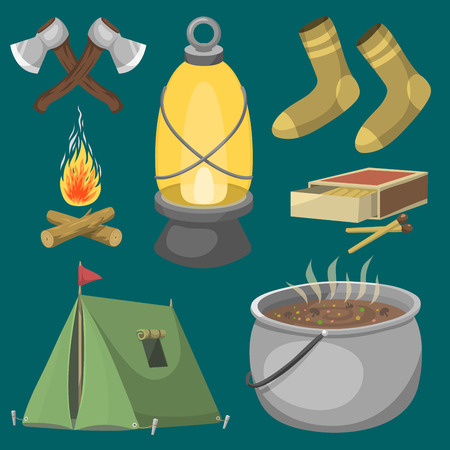1. Understanding Your Tools: Compass and GPS Basics
When you’re heading out into the backcountry, knowing how to use both a compass and a GPS can make all the difference in staying found. Whether you’re hiking in the Rockies or backpacking through the Appalachians, each tool has its own strengths—and knowing when and how to use them is key. Let’s break down the basics of these navigation tools so you can hit the trail with confidence.
Compass Basics
A traditional compass is a tried-and-true navigation tool that doesn’t rely on batteries or satellites. It’s lightweight, durable, and always ready to go. Here are some key features:
| Feature | Description |
|---|---|
| Baseplate | Clear plastic plate for map work and measuring distances |
| Magnetic Needle | Points to magnetic north; usually red on one end |
| Rotating Bezel (Dial) | Used to set bearings and navigate accurately |
| Direction-of-Travel Arrow | Shows which way to point when following a bearing |
| Sighting Mirror (on some models) | Helps with precise bearings over long distances |
Types of Compasses
- Baseplate Compass: Great for map reading and general hiking use.
- Lensatic/Military Compass: Offers durability and precision, often used by search-and-rescue teams.
- Sighting Compass: Good for advanced navigation where accuracy is critical.
GPS Device Basics
A GPS (Global Positioning System) device uses satellites to pinpoint your exact location anywhere on Earth. Modern handheld GPS units are designed for rugged outdoor use and offer features like digital mapping, waypoint marking, and tracking your route.
| Feature | Description |
|---|---|
| Satellite Connectivity | Receives signals from multiple satellites for accurate positioning |
| Digital Maps/Waypoints | Stores maps and allows you to save specific locations (waypoints) |
| Batteries/Charging Port | Powers the unit; keep spares or a charger handy! |
| User Interface/Screen | Displays your position, map, and menu options |
| Tracking & Backtrack Features | Keeps a record of your path so you can retrace your steps if needed |
Types of GPS Devices
- Handheld GPS Units: Designed specifically for outdoor adventures—rugged, weatherproof, and reliable.
- Smartphone Apps: Convenient but less reliable in remote areas due to battery life or lack of service.
- Wearable GPS Watches: Lightweight option for quick reference while moving.
When to Use Each Tool?
| Compass | GPS Device | |
|---|---|---|
| No Battery Worries? | ✓ | ✕ |
| Easily Used with Maps? | ✓ | ✓ |
| User-Friendly Interface? | ✕ | ✓ |
| Tough Weather/Physical Conditions? | ✓ | ✕ (some exceptions) |
| Navigating in Featureless Terrain? | ✕ | ✓ |
The Bottom Line: Get Comfortable with Both!
The best backcountry navigators know how to switch between compass and GPS depending on what the situation calls for. Practice using both tools before you need them—so when you’re out there exploring America’s wild places, you’ll always know exactly where you stand.
2. Map Reading and Terrain Association
Understanding Topographic Maps
Topographic maps are your best friend when navigating the outdoors in the U.S. They show you a bird’s-eye view of the land, including elevation, water features, trails, roads, and important landmarks. Learning how to read these maps is an essential outdoor skill. Start by familiarizing yourself with the map legend, scale, and contour lines. Contour lines show you how steep or flat the terrain is—close lines mean it’s steep, while wide spaces mean gentle slopes.
Key Landmarks to Recognize
Landmarks make navigation easier by giving you reference points. Common U.S. trail landmarks include peaks, valleys, lakes, rivers, and manmade features like trail junctions or fire towers. These are usually marked on your topographic map. Knowing what symbols represent each landmark helps you match what you see around you to what’s on your map.
Common Map Symbols Table
| Map Symbol | What It Means |
|---|---|
| ▲ | Mountain Peak |
| ≈ | River or Stream |
| ⎯⎯ | Trail or Road |
| ◼︎ | Shelter/Cabin |
| ○ | Lake/Pond |
Matching Map Features to Real-World Terrain
The real skill comes from matching what you see on your map with what you see in front of you. This is called terrain association. For example, if your map shows a creek running alongside your trail for half a mile before crossing a bridge, look for those features as you hike. If your path passes between two hills on the map, check for those hills as visual checkpoints.
Quick Tips for Terrain Association
- Pause regularly to compare the terrain with your map.
- Use obvious features—like ridgelines or streams—for easy orientation.
- If you get turned around, find a high spot for a better view and reorient yourself using major landmarks.
Practice Makes Perfect
The more you practice reading maps and associating them with the actual landscape, the more confident youll feel navigating with just a compass and GPS. Start small—try this at local parks or well-marked trails before heading into remote backcountry areas.

3. Hands-On Compass Navigation Drills
If you want to stay found in the wild, knowing how to use a compass isn’t just a cool skill—it’s essential. Let’s break down some practical field exercises you can do to build real confidence with your compass, whether you’re hiking the Rockies or exploring local trails.
Taking Bearings: Find Your Direction
Taking a bearing means figuring out which direction to go based on your map and surroundings. Here’s a simple drill:
| Step | Action |
|---|---|
| 1. Stand in an open area | Pick a landmark (like a tree or rock) in the distance. |
| 2. Hold your compass flat | Point the direction-of-travel arrow at your landmark. |
| 3. Rotate the dial | Turn it until the orienting lines match north on the needle. |
| 4. Read the bearing | The number at the index line is your bearing in degrees. |
Following a Route: Stay on Track
Once you have your bearing, practice following it over different types of terrain. Walk toward your chosen landmark, keeping your compass lined up as you move. In American backcountry, this is key for staying on course when trails disappear or weather turns bad.
Pro Tip:
If you need to travel around obstacles (like thick brush or streams), count your steps and use landmarks so you don’t lose your place.
Triangulation: Pinpoint Your Location
If you’re unsure where you are, triangulation helps you figure it out by taking bearings to two or more known landmarks and drawing those lines on your map. Where they cross is your location! Here’s how:
- Select two visible landmarks (mountains, towers, etc.) that are also marked on your map.
- Take a bearing to each with your compass.
- Transfer these bearings onto your map from each landmark using a protractor or compass edge.
- Your position is near where the lines intersect.
Correcting for Declination: True North vs. Magnetic North
The U.S. spans several degrees of magnetic declination—meaning magnetic north isn’t always true north. Check your local declination (often printed on maps or available online), then adjust your compass before heading out:
| Region Example | Typical Declination Adjustment |
|---|---|
| Pacific Northwest (Seattle) | Add ~15° East |
| Northeast (Maine) | Subtract ~16° West |
| Midwest (Chicago) | No major adjustment needed (~0°) |
This step is crucial—otherwise, even perfect compass work could lead you off course!
4. Mastering Your GPS in the Wild
Why GPS Skills Matter Outdoors
GPS devices are game-changers for outdoor navigation in the U.S. Whether youre hiking in Yosemite or trekking through the Rockies, knowing how to use your GPS properly can keep you safe and on track. Lets break down some practical skills every outdoor enthusiast should master.
Setting Waypoints Like a Pro
Waypoints are digital markers you set along your route. These can be trailheads, campsites, water sources, or any spot you want to find again. Most handheld GPS units and smartphone apps let you name and save waypoints easily.
| What to Mark as a Waypoint | Why It Matters |
|---|---|
| Trailhead | Ensures you can find your way back to where you started |
| Campsite | Makes returning after exploring easier |
| Water Source | Essential for planning hydration stops |
| Scenic Viewpoint | Never miss that perfect photo op again! |
Tracking Routes and Using Breadcrumb Trails
Your GPS can record your path as you travel—this is often called a “track” or “breadcrumb trail.” If you ever get turned around, just follow your digital breadcrumbs back to safety. This feature is especially useful when off-trail or navigating in low-visibility conditions common in American wilderness areas.
How to Start Tracking:
- Select “Start Track” or “Record Route” before you head out.
- Your GPS will automatically log your movement.
- You can pause or stop tracking if needed (great for breaks or long stops).
- If lost, choose “Navigate Back” or follow your breadcrumb line on the screen.
Troubleshooting Common GPS Issues
No device is perfect! Here’s a quick reference for common problems and fixes while in the field:
| Problem | Possible Cause | Quick Fix |
|---|---|---|
| Poor Satellite Signal | Dense trees, deep canyons, heavy cloud cover | Move to an open area with a clear view of the sky; wait for better reception |
| Batteries Dying Fast | Cold weather, leaving screen/track always on | Cary spare batteries; dim the screen; turn off when not needed; use lithium batteries for cold temps |
| Incorrect Location Reading | Not enough satellites connected; outdated maps/software | Wait for more satellites; update device software/maps before your trip |
| Losing Saved Waypoints/Tracks | User error; full memory card/device storage issue | Double-check saves; clear unneeded data before trips; backup important points regularly |
Practice Makes Perfect!
The best way to get comfortable with your GPS is to practice these skills during local hikes before venturing deep into America’s wild places. Set waypoints at familiar landmarks, track your route, and try following breadcrumbs home—soon it’ll feel like second nature!
5. Building Situational Awareness and Staying Found
Mastering the Basics: Keeping Your Bearings
When you’re out on the trail, situational awareness is your best friend. It means constantly checking in with your surroundings and knowing where you are at all times. To keep your bearings, regularly glance at your compass and map, even if you’re using a GPS. Don’t rely on technology alone—batteries die and signals get lost, especially deep in America’s backcountry.
Avoiding Common Navigation Mistakes
Even experienced hikers can slip up. Here are some classic mistakes to watch out for, and how to steer clear of them:
| Mistake | How to Avoid It |
|---|---|
| Forgetting to orient your map | Always align your map with north using your compass before you start walking. |
| Ignoring landmarks | Make mental notes of rivers, ridges, or distinct trees as reference points. |
| Over-relying on GPS | Back up digital navigation with analog skills like map reading and compass work. |
| Losing track of distance covered | Use pacing (counting your steps) or time checks to estimate how far you’ve traveled. |
Pacing and Time Checks: Your Backup Navigation Tools
Pacing and time checks are simple yet powerful techniques that help you stay found, even if gadgets fail. Here’s how they work:
- Pacing: Figure out how many steps it takes for you to walk 100 feet (or 100 meters). Use this number to estimate distances as you hike. For example, if it’s 60 steps for 100 feet, count your steps as you move between trail junctions or landmarks.
- Time Checks: Keep an eye on your watch and estimate how long it should take to reach certain points based on your average walking speed (usually about 2-3 miles per hour for most people). If you’re running late, pause and check your location against your map and compass.
Quick Reference Table: Pacing & Timing Tips
| Technique | How-To Tip |
|---|---|
| Pacing | Count steps between landmarks; use tally counters or beads if needed. |
| Time Checks | Estimate arrival times; check progress every 30-60 minutes. |
| Backup Strategies | If unsure, stop moving, re-orient yourself with map & compass, retrace steps if necessary. |
Pro Tip: Practice Makes Perfect!
The more you practice these field exercises—both in easy terrain and challenging conditions—the better prepared youll be to stay found anywhere from Yosemite to the Appalachian Trail. Remember: regular check-ins with your tools and surroundings are key to safe adventuring in the great American outdoors.


